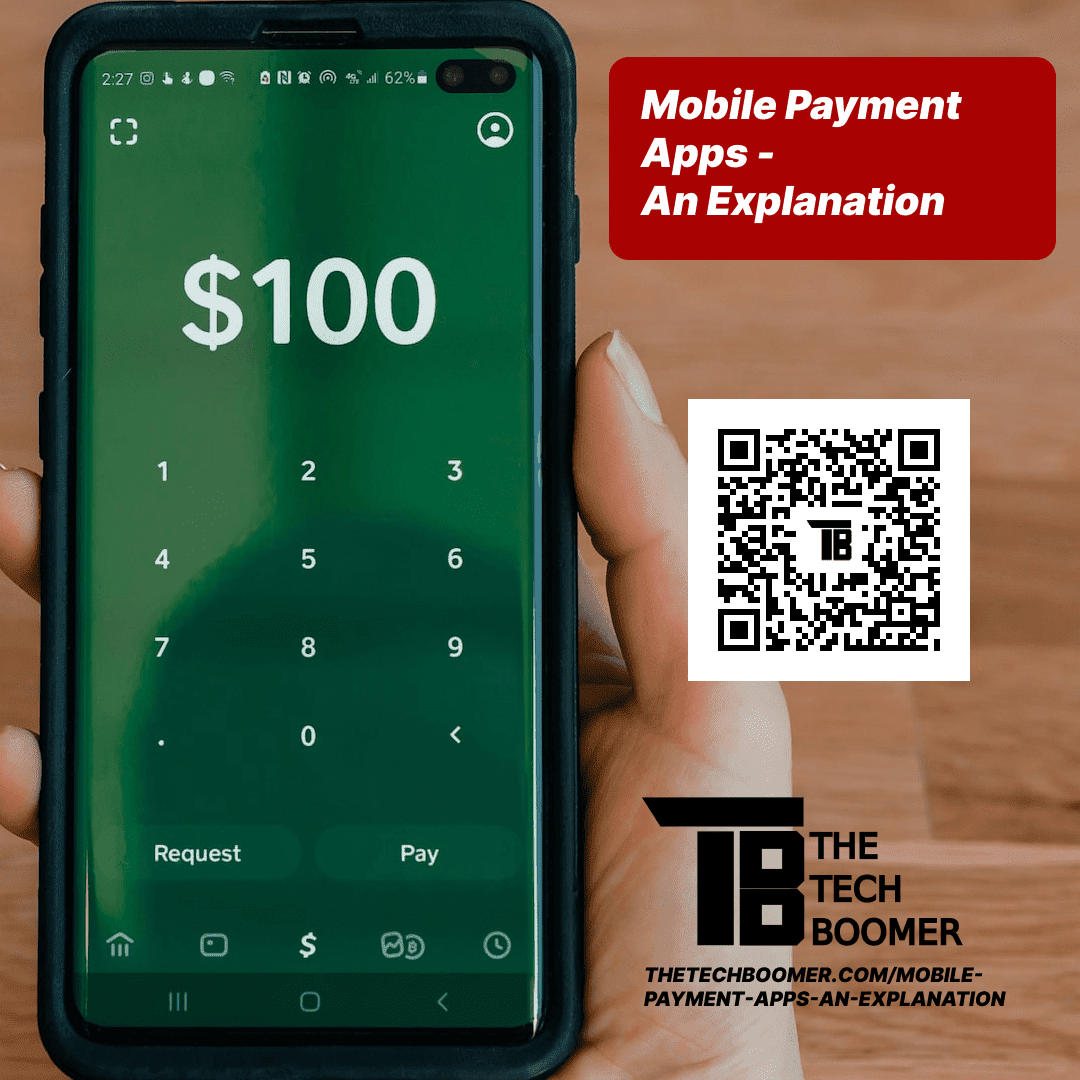What Are Mobile Payment Apps? An Explanation
Everywhere you go these days it seems like no one is using cash anymore. Even at the old faithful places like flea markets, festivals, and yard sales, people are using mobile payment apps.
But what are they, how do they work, and how safe are they?
Explanation Of Mobile Payment Apps
Mobile payment apps are Android or iPhone apps that allow people to transfer money to another person.
The apps are attached to a credit or debit card, or the user can transfer money into the app to be used for transactions.
This transfer is either initiated by the sender, or a request is made from the recipient.
These apps just about eliminate the need to carry large sums of cash with you while out and about, thus reducing the risk of it being stolen.
But what about the risk of using payment apps?
Importance Of Payment App Security
Actually, keeping your payment app secure is a bit more complicated than keeping your cash secure.
And losses from a payment app can be far less, or far greater than losing the cash you have in your pocket or purse. At least if the criminal steals only your cash, that’s all they get. (Hopefully) you have more in the bank.
If they steal your wallet or purse with the cash in it, they could make off with car keys, your driver’s license, your checkbook, credit and debit cards, and much more.
But if a thief gets access to your mobile payment app, they could gain access to a lot more money than what’s in your pocket.
Payment App Security Overview
Let’s look at the history of mobile payments apps, how they work, and why to use them.
Brief History Of Mobile Payment Apps
Being able to pay for stuff with your phone started in Japan in the early 2000s. At first, people could purchase from vending machines by texting to a particular number. Then along came smartphones in 2007. That enabled various apps to be installed. Mobile payments grew fast in developing countries where people who didn’t usually have access to banks (which is estimated to be half of the world’s adult population) could make transactions without having to carry cash, and run the risk of it being stolen.
In a previous article, I wrote about using your phone to pay for products and services. That was focused on using Google Pay and Apple Pay to pay at businesses.
This time I’m talking about apps that allow us to send money to individuals, including at festivals and yard sales.
While there are many mobile payment apps, the ones I’m looking at now are:
- PayPal
- Venmo (owned by PayPal)
- CashApp (Owned by Square)
These are the apps people will encounter most often.
How Mobile Payment Apps Work
To use a mobile payment app, one can search for someone (depending on the app) using their name, username, phone, or email. Then they can send or request money.
An alternative way is to scan a QR Code. Many vendors at flea markets and festivals have their QR code displayed where you can scan it.
Advantages Of Using MobilePayment Apps
As I said, the main advantage of using a mobile payment app is not having to carry large sums of cash around.
Also, convenience is a factor, especially for the recipient. Not having to make change, money is secure and not in a box under the table, etc.
Speaking of security, let’s look at how secure mobile payment apps are.
Security Measures
We’ll look at the levels of security each of the big three mobile payment apps have.
Two-Factor Authentication
All three of the mobile payment apps offer two-factor authentication (2FA), either through SMS or authenticator app.
This prevents someone from getting into your account from a device other than your phone.
Fraud Prevention
Each of these apps has notifications for payments, as well as a passcode-lock option to prevent someone who has your phone from initiating a payment without you.
Also, all three include a QR code option to ensure that you are sending money to the correct person.
I looked my name up in Venmo and stopped counting at 150. In scrolling down there’s at least 300 people with my name, so it’s important to verify who you are sending money to.
Beyond these measures, none of the apps offer any other type of fraud protection. If the person you authorize payment to turns out to be a fraud, you cannot make any type of charge back.
If you are using a credit card for payment through a mobile payment app, you may be able to initiate a chargeback through them, just as you would be able to do if you used the credit card directly.
Buyer And Seller Protections
Of the three mobile payment apps, Paypal and Venmo (owned by PayPal) do offer some buyer and seller protections for business accounts. For example, if you purchased something from a business and didn’t receive it, or bought a name brand item and received a knockoff. They both charge a small (approximately 2%) fee to the seller for this.
Cash App does not, as far as I can see, offer any type of protection like this.
Risks And Concerns Of Mobile Payment Apps
Just like any type of monetary transaction, there are risks and concerns with using mobile payment apps.
Unauthorized Access To Accounts
As stated above, all of these mobile payment apps offer 2FA to keep anyone from unauthorized access to your account.
And while 2FA is secure, there is a way for criminals to bypass it. Read my article on this 2FA scam.
Identity Theft
Identity theft isn’t a problem with these mobile payment apps. Venmo does have a social aspect to it, as people could be able to see who you have paid, and who has paid you.
This can be set to just friends, or, in my opinion, it can be turned off completely.
PayPal and Cash App don’t have anything like this.
Potential Scams
This is the real risk of using mobile payment apps. The potential of scams.
Yes, you can be scammed by using cash, check, or credit card. It’s just a little easier for crooks to do it on a wide scale with a mobile payment app.
I’ll go into this in detail in a future article, but basically, a crook could change their profile name and impersonate someone you know in order to send you a payment request.
Most people would question a request like this coming from out of the blue, but sometimes someone might not be paying attention and simply hit “OK” to the request.
This isn’t a problem with the mobile payment app itself, it’s a problem with criminals, and people not paying attention.
Stay tuned for more on this.
Best Practices For Secure Use Of Mobile Payment Apps
Like any app or service involving your finances, there are best practices for using these apps.
Using Strong Passwords
“12345”, “qwerty”,and “password” are the top three passwords used on apps. See this article on the top 10 most hacked passwords.
A strong password should be one that’s long (at least 12 characters), and not easily guessed. All password managers offer the ability to create strong passwords. This is why you should use one.
I write about password managers here.
I’m using 1password as my password manager of choice. (I was using LastPass, but due to their recent security breach, I’ve dropped them like a hot potato).
A good strong password should look like this:
“hzn0uxp9zfn3BTH@xkc”
That’s harder to guess than “monkey123”
Avoiding Public Wi-Fi
While mobile payment app transactions are encrypted, doing any type of banking or financial transactions on public wi-fi can be risky.
One risk is when a criminal sets up a hotspot with a name similar to the one at the place you are visiting, say a coffee shop or library. You might connect to the crook’s site instead of the real one.
This could allow the bad guy to redirect your browsing to a fake site, and in turn, have the opportunity to steal your passwords.
I will cover how this works in a later article.
Verifying Transactions Before Completing Them
This is a no-brainer, but it is so easy to just trust your eyes. Like I stated above, there were over 300 people with my name. Always confirm with the person you are sending money to what their correct username, phone number, or email address is.
Conclusion
Using mobile payment apps has both benefits and risks. It’s important to be aware of what you’re doing at all times.
Recap Of The Benefits Of Using Mobile Payment Apps
Using mobile payments is a convenient way to make small financial transactions between individuals.
- There is no need to carry cash and risk it being stolen.
- The recipient does not need to make change.
- The sender gets a notification of the transaction, which can help them remember where they spent their money or how much something was.
Importance Of Being Aware Of Security Risks
- Don’t use public wi-fi for mobile payment apps, or for any financial transactions.
- Verify the person you are sending money to.
- Remember, using a mobile payment app is like using cash. If you’re scammed out of it, it’s gone.
Use Your Mobile Payment App Safely And Securely
As long as you are aware of the risks of someone attempting to scam you out of your money, mobile payment apps are a safe, secure, and convenient way to make small financial transactions between individuals.
As always, if you have any questions on this or any other topic, please leave a comment below, or email me at larry@thetechboomer.com





